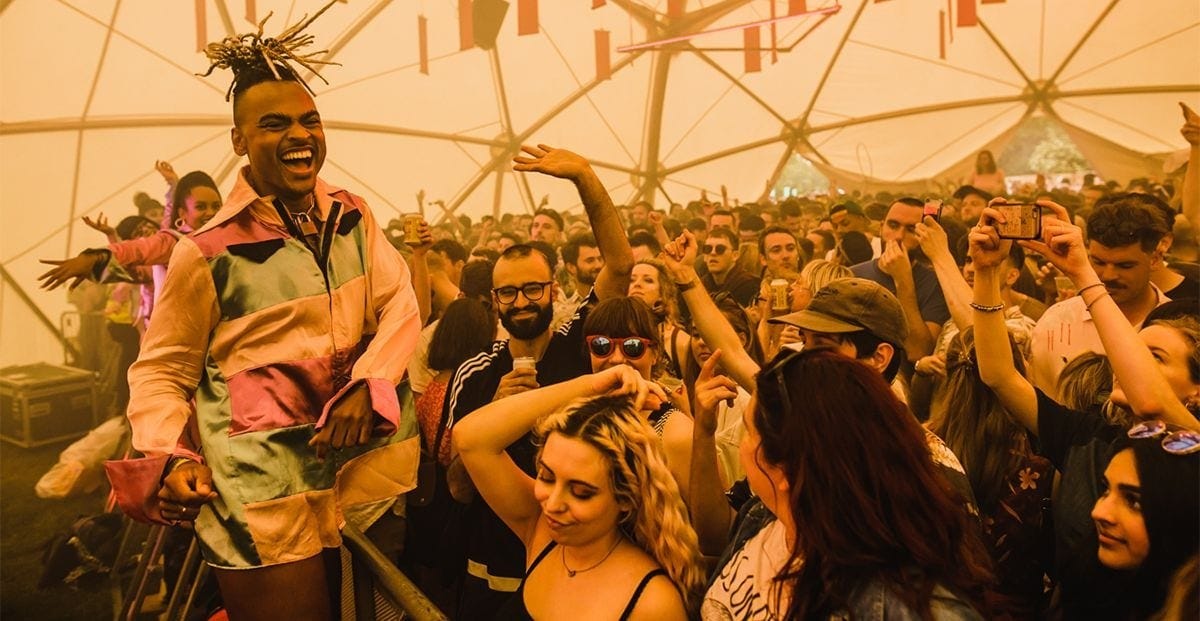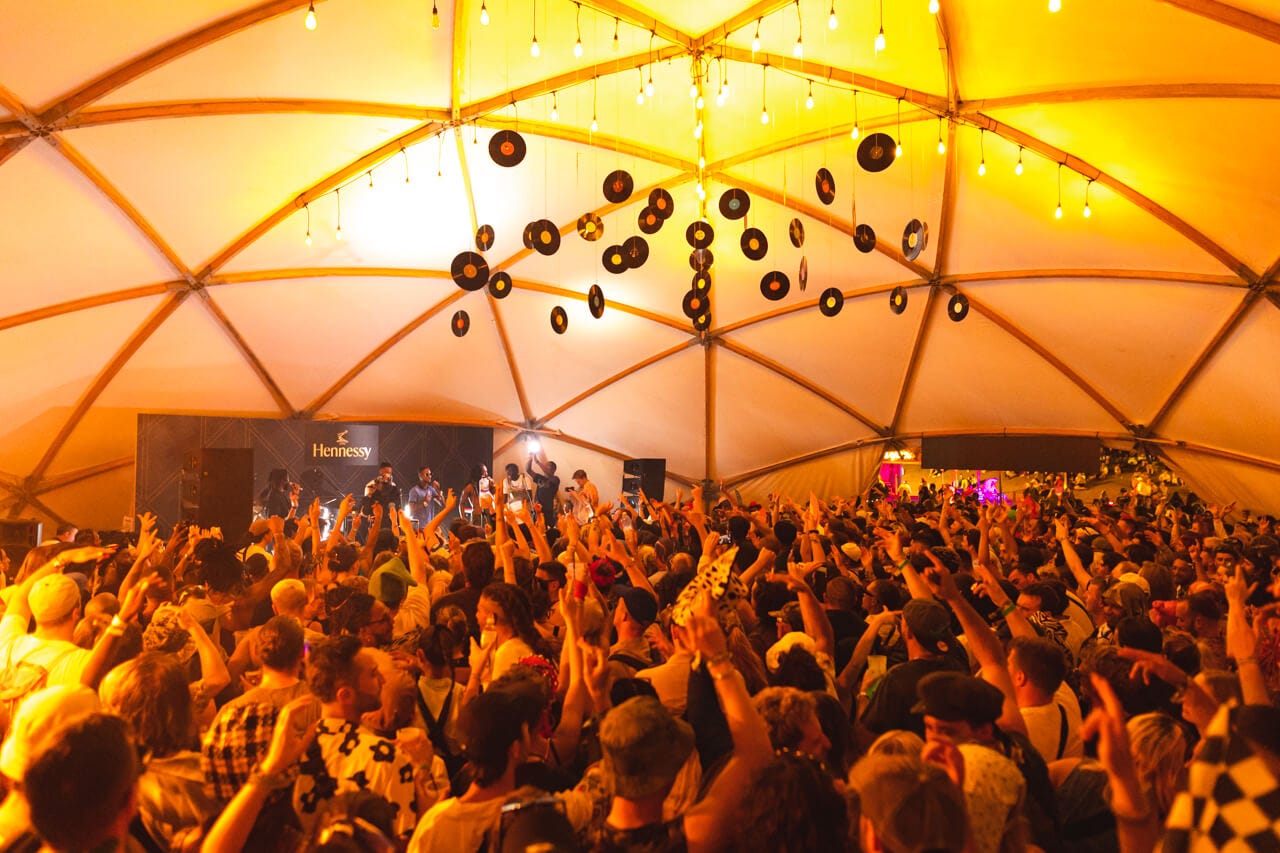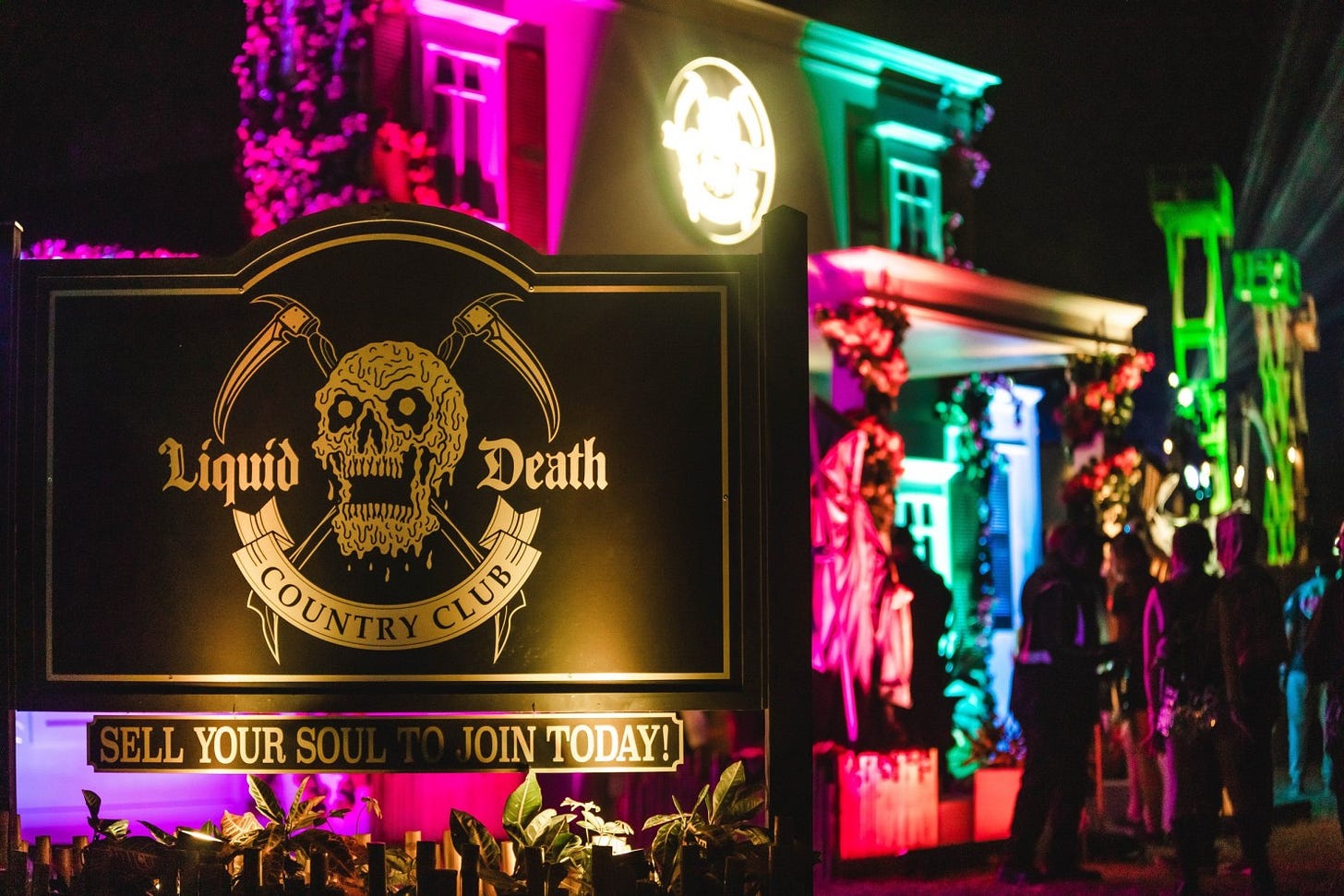Festivals have long been a culture-driver and epicentre of community, they’re a testament to constructing imagined communities amongst disparate groups of people with shared interests. They celebrate heritage, innovation, culture, and perhaps most importantly, music. In a culture that values tangible, physical experiences over digital, it’s important to physically show up in these cultural spaces, to ingrain oneself into the communities that value it, and to truly understand why they’re so important (especially amidst a cost of living crisis, people are willing to save for these festival experiences).
People love to bemoan online the ‘death’ of the festival, especially at the hands of corporate influence and social media. Every year, pictures circulate of stagnated crowds during headliner sets, more focussed on getting the perfect picture for Instagram over actually engaging in the community-building and shared social experiences of the festival. Stages are plastered in brand names, strange and often mysterious exclusive ‘VIP’ sections crop up, with little explanation of their significance. Influencers often get chalked up to blame, as brands have become less interested in engaging with the cultural heritage and community, and more about just getting their name seen. And what’s relatable about that? What is the incentive for your average young person to feel any sort of emotional connection to this brand?
A question arises: could experiential brand activations centred on real-life interactions breathe new life into the festival scene?
With such a wide range of festivals in the UK, each with its own community and cultural identity, it’s paramount to understand why it exists, and why it’s important. If you’re an expert in your category, and understand the true ethos that underpins a festival, you’ll be able to not only connect with the audience there, but to authentically promote your own cultural identity as a brand in a way that doesn’t feel corny or mid.
This may seem slightly obvious, but often it’s overlooked! Slapping a name on a stage will bring your name to a huge audience, but will they really understand who you are? More importantly, do you understand who they are, what they want? Handing out a sample can bring immediate satisfaction, but once it’s gone in the bin or used, what’s keeping your audience thinking about you?
It’s all about delivering a brand promise. How can one stay true to the culture and community of a festival without imposing unnecessary branding, while also communicating the brand message and identity? In other words, how do you move a partnership beyond a vanity project or purely functional to something exciting and ownable for festival-goers?
Brands who understand the importance of physically showing up for festivals, and authentically engaging with the culture, heritage, and traditions of the ‘scene’ win out. Festivals are meant to be fun, and with a generation of young people feeling constantly trapped within the digital world, festivals become a form of escapism. And because this generation is inundated with unprecedented levels of targeted advertising and general content online, their desire for the escapism and care-free fun at festivals is really important. Brands need festivals for exposure, and festivals need brands to augment the experience to something truly special - but this symbiotic relationship has been muddied by influencer-culture and changing perspectives online.
Brands who understand the importance of physically showing up for festivals, and authentically engaging with the culture, heritage, and traditions of the ‘scene’ win out.
Brands can become part of the cultural conversation through authentic partnerships with festivals, so it’s important to go beyond just showing up and expecting people to come to you. You need to ingrain yourself into the community ethos of a festival, and show up relevantly. Selecting the right festival to partner with is equally paramount. By understanding the underlying ethos of a festival and its audience, brands can authentically promote their cultural identity without appearing forced or insincere. It's not merely about slapping a name on a stage but rather about fostering genuine connections and leaving a lasting impression on attendees.
Consider the example of Liquid Death at Live Nation festivals, which ingeniously promotes hydration in a festival setting, offering attendees access to branded "Country Clubs'' for relaxation and exclusive experiences (that also feel as transgressive as the brand is, with Horoscope readings and a live string quartet). Or, Adobe’s Art Garden installation during Lollapalooza. To celebrate the new look of the festival, Adobe partnered with three Chicago creators to show what they love most about the city and its culture. This showcased the brand’s love of creativity, while also connecting with the local cultural importance of the festival, thus creating a symbiotic relationship that made sense and didn’t feel overly contrived.
You need to ingrain yourself into the community ethos of a festival, and show up relevantly.
Similarly, the collaboration between Vodafone and Glastonbury goes beyond promoting cellular connectivity; but actually encouraging the facilitation of human connection, an ethos found both with the famous festival and the service provider.
Successful brand partnerships extend beyond mere visibility; they require genuine engagement with the festival community and a commitment to enhancing the attendee experience. Festivals provide a unique opportunity for brands to connect with their target audience in a meaningful way, transcending traditional advertising methods.







